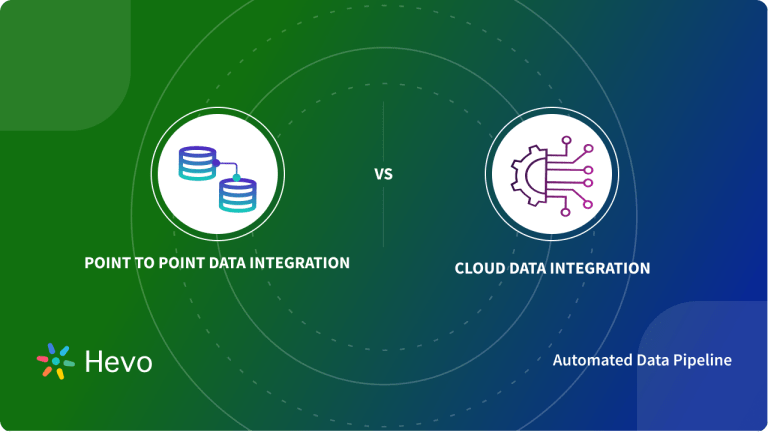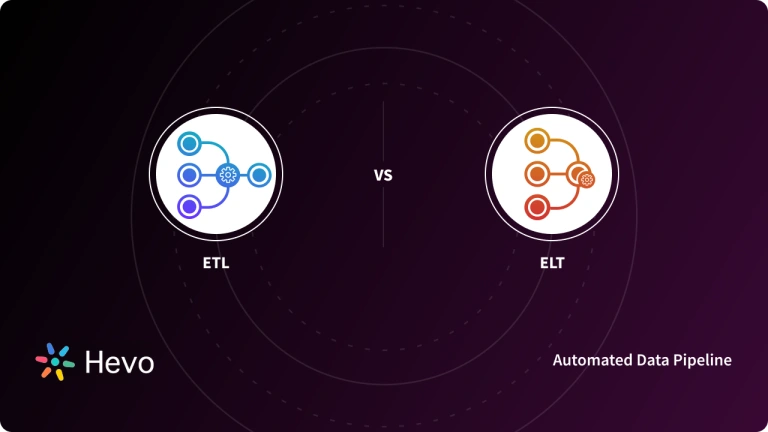Choosing the best tool for the job requires a thorough understanding of each type of integration. That is why we need to dive deeper into learning about data integration vs application integration and which one to opt for.
In this article, you will understand the differences between the two types of integrations so that you can make an informed decision about your business.
Table of Contents
What Is Data Integration?
Data integration, however, involves more than just transferring data from one database to another; it also involves improving the usability of the data. Data integration combines structured and unstructured data from various sources to produce new, useful data sets.
Benefits of Data Integration
- Higher quality data: Integration facilitates improving data quality by detecting inconsistencies, errors, and duplicates.
- Increased data accessibility: With easy access to data, a business can easily find and retrieve the data it wants from one centralized location, thereby saving time and effort.
- Improved decision-making: With an overview of the entire operation, a business is able to analyze data from various sources and gain insights that improve decision-making.
What Is Application Integration?
When two or more apps are integrated, connections are built between them so they can communicate with one another.
The connection breaks down data silos and boosts productivity across the entire organization by integrating the apps’ operations and merging the data in real-time.
For quicker and more effective lead follow-up, a business might combine an instant messaging platform like Slack with Salesforce. Users can exchange information between the two without any hassle, thanks to application integration in this case.
Benefits of Application Integration
- Improved efficiency: This is because integration of applications eases operations and eliminates manual tasks, hence improving efficiency.
- Less manual effort: Since integrated applications share data seamlessly, there is no need to manually feed the data into the applications at different stages, thus saving much time and effort.
- Higher accuracy of data: Since all applications are updated with real-time data, a business can obtain the most updated and accurate information across various integrated applications.
Hevo can make your data and application integration process a breeze with its no-code platform. With Hevo:
- Automate Data Extraction: Effortlessly pull data from 150+ connectors(and other 60+ free sources).
- Transform Data effortlessly: Use Hevo’s drag-and-drop feature to transform data with just a few clicks.
- Seamless Data Loading: Quickly load your transformed data into your desired destinations, such as databases, data warehouses, SaaS tools, etc.
Try Hevo and join a growing community of 2000+ data professionals who rely on us for seamless and efficient migrations.
Get Started with Hevo for FreeData Integration vs Application Integration: Key Differences
| Aspect | Data Integration | Application Integration |
| Focus | Consolidates and manages data from multiple sources. | Connects and coordinates different applications to work together. |
| Communication | Typically involves batch processing or ETL (Extract, Transform, Load) for data synchronization. | Involves real-time or near-real-time communication between applications. |
| Need for Transformation | The schemas are dynamic. Hence, there is no need for pre-load transformations. | They have fixed schemas. Hence, the data being pulled from one application must be transformed before it can be used by the second. |
| Handled by | DataOps | DevOps |
| Example Scenarios | Merging customer data from different databases into a data warehouse. | Synchronizing customer data between CRM and ERP systems. |
Data Integration vs Application Integration Use Cases
Use Cases for Data Integration:
- Transfer information to a data warehouse/lake.
- Combine and compile client information from several sources into a single view.
- Help a user make the switch to a multi-cloud or hybrid cloud environment.
Use Cases for Application Integration:
- To collect data from Internet of Things (IoT) devices so that it can be stored and used for analytics.
- Sync legacy, on-premises ERP systems to CRMs.
- Create automation between programs to create workflows that are more effective.
Also Read: Data Integration vs ETL: Understand the Differences
When to Use Application Integration vs Data Integration?
Application integration involves integrating two or more independent applications so that they can work together and exchange data. This can be done through various methods such as APIs, message queues, or integration platforms.
Application integration is often used to automate business processes and improve efficiency by allowing different applications to share and process data.
On the other hand, data integration involves integrating data from different sources and combining it into a single view or system.
This can be done through various methods such as ETL (extract, transform, load) processes, data lakes, or data warehouses. Data integration is often used to support data analytics, reporting, and business intelligence by providing a single source of truth for data.
In general, application integration integrates different applications and automates processes, while data integration is used to integrate and manage data from different sources. Both types of integration can be used together to support various business needs
Why You Should Use a Combination of Application Integration and Data Integration
Digital transformation refers to the use of technology to fundamentally change how an organization operates and delivers value to its customers.
Data integration and application integration are often critical components of digital transformation initiatives because they enable the flow of data and the integration of systems and applications that are needed to support new digital processes and services.
The overlap between data integration and application integration in digital transformation initiatives is that they both involve the integration of various technologies and systems to support new digital processes and services.
By enabling the flow of data and integrating systems and applications, organizations can gain a more complete and unified view of their operations, which is necessary for effective digital transformation.
Final Thoughts
In short, application integration links real-time data from several sources, whereas data integration combines various data sources into a single repository. Whether it be user-friendliness and adaptability or thorough data management, each process has a unique set of advantages.
It doesn’t matter which is “better.” Each of them is suitable for a unique purpose. Data integration operates at the database level, whereas application integration deals with data at the application level.
While tools like Hevo make it a lot easier because of the no-code pipelines and real-time, this comes from mixing proper strategies with actual tools. A structured approach toward integration will ensure that data is managed smoothly and that correct decision-making is made.
Sign up for Hevo’s 14-day free trial and experience seamless data integration.
Frequently Asked Questions
1. What is the difference between data and application integration?
Data integration combines data from different sources into a unified view, while application integration connects different software systems to work together in real time.
2. What are the 4 types of application integration?
1. Data Integration: Combines data from different sources into a unified view.
2. Process Integration: Coordinates processes across multiple applications for seamless workflows.
3. User Interface Integration: Merges the front-end interfaces of different applications for a unified user experience.
4. Application Functionality Integration: Integrates specific functions or features from one application into another.
3. What are examples of data integration?
– Syncing customer data from CRM to a marketing tool.
– Merging sales data from multiple stores into a single report.
– Consolidating financial data from different departments.












